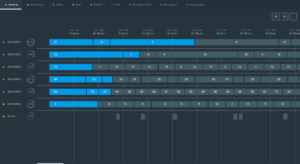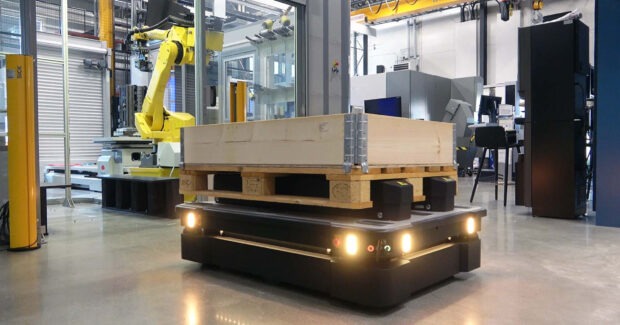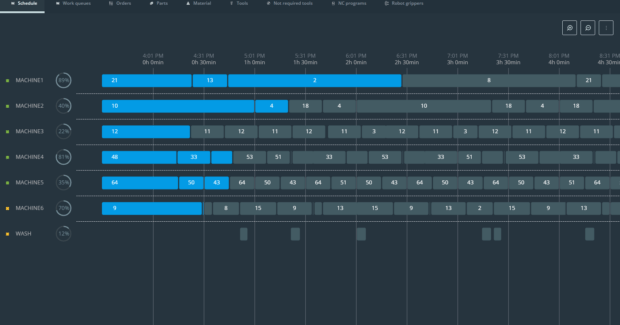Pinpointing Production Bottlenecks with Automation Control Software
When it comes to automation, the best place to start is with a comprehensive, central automation software system that will link your machines.
Posted: January 3, 2024

While visiting a manufacturing facility I always ask the same question to the production manager even though I know the answer: “Are you busy?” They’re always busy. It would be unimaginable to hear them answer differently. There is never a moment in which they are not running close to their current maximum output while putting out fires and solving situations. The real questions are: “Where are you always busy?” or “What items are your machines waiting for every day?” Answering questions along those lines starts the conversation around how we identify bottlenecks so that we can eliminate processes that are not creating a profit. In our business, it’s the machines that are creating the value and profit. Every time they sit waiting for parts due to lunch breaks or missing tools or safety trainings, the facility is not generating profit. Going through processes and metrics is a laborious task without proper tools and, without them, it is easy to misinterpret the current productivity status. If you’re always too busy, how could you possibly make more parts?
At its most fundamental, what automation software offers is visibility — past, present and future. I still have not found an aspect of a customer’s work that couldn’t benefit from automation software. The machines are the heart of the production operation and machining processes are most important to develop. The best way to get the most out of those machines is to implement a flexible centralized control system. I like to say that the most important task of Fastems’ Manufacturing Management Software (MMS) is to feed the machines in a constantly changing environment. A good central system should be able to take on all aspects of scheduling, material inventory and predictive management, and efficiency analyses and automated KPI reports. It will also be able to connect and direct any future automation hardware and software.
One of the most powerful features in MMS is its Dynamic Scheduling, which bases production plans on material availability, customer orders, deadlines, and manufacturing speed. Its most important job as a software is to keep machines running. It generates tasks for operators so that each consecutive job is done on time and queues the pallet or part to the machine. If the planned machine is not able perform the task, the software will send the next available job and, if possible, send the most urgent job to another machine with resources at the ready. Live production and resource monitoring is something that most production planners just don’t have the time to do. Typically, when they notice the issue, the machines are already stopped and waiting. The easy way to avoid stoppages might be by making large quantities of well-known parts to stock before doing the next part, but this leads to inflated WIP values and the possibility of having to turn down new work so that you don’t disturb daily production. An adaptable system is crucial, especially for shops that run a mix of parts in a lights-out environment. Basic production systems may stop production entirely because the queue cannot be finished. During unmanned operations there are no personnel on site to change tools or adjust the production plan at every hiccup.
These days, competent operators are rare. Most are snatched up before they even officially start looking for a position. Shops may have to compete for the best new personnel even above their normal rates. It is very hard to get more of those skilled people on your shop floor today. So, in many cases, the only way to grow is to figure out how you can make more with the good people you have today. What if your best operator could manage three machines instead of one, and less experienced people could work on easier tasks such as loading and unloading pallets for those machines and tasks for which automation has been already scheduled?
The best place to start is with a comprehensive, central automation software system that can be linked to your machines. A quality software will start breaking down material shortages, tool overuse, fixturing delays, and machining errors as soon as it is installed. Your visual reports indicating how your business is running allow processes to be developed even further. Focusing on stable processes and fine-tuning NC-programs will give you extra unmanned production and higher quality parts. Every step of the way results in a cost saving or increase in profitability. You will start to add automation solutions and connect different processes. The journey to develop into full automation is long, but it’s not intimidating. Every step taken to build a stable and flexible automation system yields benefits and helps with productivity. It is important to note that working closely with your automation partner to implement the right system is crucial to its success.
Autonomous Mobile Robots, and Digital Twins
If your shop is experiencing downtime in between jobs as parts and materials are offloaded and re-fixtured, consider an automated pallet changer to move materials. If the material needing to be moved is large, unwieldy, or on the other side of the shop, look into automated transport vehicles. Automated tool and material storage units help to keep inventory, track usage and predict need. As you pinpoint these bottlenecks, you’ll start to view them as areas of potential. Your software will emphasize how much capacity you have left to grow on every machine or cell that is connected to it.
Not all your additions need to be hardware, either. Auxiliary automation software systems can help in any setting. There are powerful verification programs to check production plans before they are put forward. These solutions catch and prevent errors before the NC code is ever output to the machining center. Many software solutions also offer digital twin simulation, a virtual representation of the exact hardware you have in your shop with its precise movements. Digital twin software shows the user how their parts will be machined in real-time, starting with the automation system on to machining. For example, MMS is capable of producing a digital version of a robotic cell that’s loading pallets on an automation system, or a cell deburring parts after machining. Digital twins expand your capabilities to visualize new plans and parts without interrupting the day-to-day production.
I would encourage anyone with a traditional job shop to consider even the most basic automation solutions. You’ll quickly find your own shop’s bottlenecks as well as start to develop a mindset about what is possible with automation. As you add more flexible automation elements to your production, you will also be able to add more parts to your repertoire.












